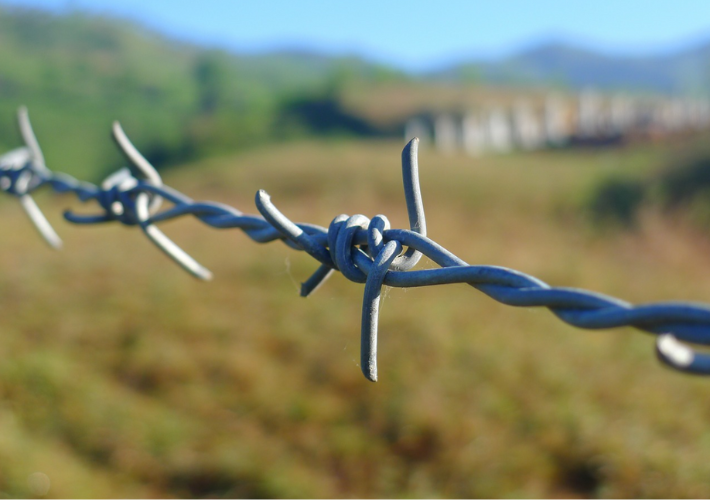Indian land borders have been in the news ever since we were slapped with the Radcliff Award during the partition. The Sino-India border dispute goes a long way, along with neighbours and numerous lines to choose from, namely the Ardagh–Johnson Line, Macartney–MacDonald Line, and McMahon Line. The border terrain is, at places, inhospitable and difficult, porous and easily accessible.
India boasts an extensive 15,106.7 km of land borders and a coastline of 7,516.6 km, including island territories. A significant portion of these land borders, about 1643 km, is shared with Myanmar. Border management has been a persistent issue with our neighbours, leading to the construction of a border fence along our borders with Pakistan and Bangladesh. This measure was primarily aimed at curbing infiltration by non-state actors and preventing drug trafficking, a strategy not yet implemented on the Myanmar border.
Historical records, including writings of contemporary English authors, notes maintained by missionaries and research through other documents, confirm the spread of communities like Kukis and Nagas on both sides of the borders. The historical records were passed down through word of mouth to get endorsed in documents later. These were based on the available literature and the perception of the writers, mainly Britishers. These communities were spread across the Chittagong Hill Tracts, through Tripura, Mizoram, South Assam, Nagaland, Arunachal Pradesh, and Southern Manipur, districts of Churachandpur, Chandel, Ukhrul and then extending into Chin province of Myanmar. Therefore, the commonality of the tribes is a fact, and identifying the settlers and refugees from Myanmar will present a major challenge.
The villages adjoining the present political border were divided on delimitation during the independence, thus separating the communities. Since the border was open and demarcated only by border Pillers (BP), the cross-border movement has continued ever since but was ratified and formalised in 2017 as the Free Move Regime (FMR). The liberalised cross-border movement regulations were also useful to the insurgent groups in Nagaland, Manipur. Bertil Lintner has highlighted this in his book ‘Great Game East’.
Free Movement Regime (FMR)
The FMR is a mutually agreed arrangement between the two countries that allows tribes living along the border on either side to travel up to 16 km inside the other country without a visa. It was implemented in 2018 as part of the Narendra Modi government’s Act East policy at a time when diplomatic relations between India and Myanmar were on the upswing. The FMR was to be put in place in 2017 itself but was deferred due to the Rohingya refugee crisis that erupted that August.
The FMR was primarily to ensure a healthy trans-border movement among the people of common ethnicity residing on either side of the border. It was also to assist farmers until the lands spread across both sides of the international border. The customs and traditions were honoured. However, this accessibility was misused by non-state actors. Nagaland and Manipur had insurgents moving in from Myanmar and even Kunming province of China. Indian Insurgent groups (IIG) have their camps across the border within this 16 km belt, thereby escaping the scrutiny of security forces and unchecked move into Indian borders at will.
The camps also serve as their nerve centre to keep an eye on the political and military dynamics in the states and influence when required, militarily or politically. These camps were most probably used as staging areas for poppy harvest during the days of the Golden Triangle, for processing and returning fully processed products through the same route for distribution in Indian states. Camps were also staging areas for businesses in the hinterland of Myanmar. This narco money was also the engine for funding the insurgent movement and procuring arms. The FMR concept was a boon to the insurgent groups under the garb of ethnic affinity across the borders.
Border Fencing
Presently, the Indo-Myanmar border does have a representative fencing of about 10 km at Moreh–Tamu border towns on either side of the border. It was a pilot project. The border fencing has been in operation on our western Border with Pakistan. The fence may not have entirely prevented the trans-border movement of non-state actors, smugglers, and other anti-national elements. Still, it helps restrict and poses a major hindrance to free movement. It also helps check and regulate movement. Of late, insurgents have taken advantage of the porous borders to move into Myanmar after initiating terrorist-related activities, knowing fully well that the Indian Army or Assam Rifles will not cross the unmanned border. The fence in no way restricts a legal move of the villagers on either side; however, with some documentation.
The border fence also helps in curtailing the free move of drug cartels from Manipur, Nagaland onwards to the famed Golden Triangle and backflow of the processed drugs. The United Nations Drug Control Programme (UNDCP) and International Narcotics Control Board (INCB) also warned that the region could become a significant transit point for illicit drugs. Manipur, a total area of about 22 327 km2 with a population of 2.7 million (density of 120 people per square kilometre), is reported to be a hard-hit epicentre of the HIV/AIDS epidemic in India. Manipur, a far north-eastern corner of the country with hardly 0.2% of the country’s population, is contributing nearly 8% of India’s total HIV-positive cases.
The need for cross-border fencing to check the unhindered movement of antisocial elements has been felt for a long time. Constructing a fence has major advantages:
- Restriction on the move of insurgents and refugees.
- Control of drug movement and smugglers of Red Sanders.
- Mapping of border villages and villagers
- Focussed approach on Border Area Development Projects (BADP)
There may not be any disadvantages, but yes, we can term them social challenges, which can be handled with specific protocols and trans-border movement regimes. The apprehensions expressed by the states do have merit, but keeping national security in view, these apprehensions can be managed so as not to cause major upheaval in social bonding spread across the borders.
Way Ahead
The central government’s proposal to fence the entire border with Myanmar has met with unanimous opposition from the states of Manipur, Nagaland, and Mizoram. All the states have cited ethnic, social, and cultural reasons. Fear among the locals of losing their land beyond the fence has also been highlighted. It will also require the full support of the Myanmar government.
The proposal has many advantages and will require deft handling in dealing with the opposition. The construction of the fence will check the unhindered movement of drugs, Insurgents, and refugees from Myanmar. All the movement will be documented through the standard visa regime. Fence will require certain protocols and actions to be implemented:
- Mapping of all the villages astride the fence on both sides of the border.
- Gates to be made at suitable distances to enable the villagers to cross over
- Introduction of a special permit called FMR Pass for the villages within the 16 km limit.
- Trade is to be restricted to the Integrated Check posts (ICP) only. Additional ICPs are to be introduced in Mizoram, Manipur, Nagaland, and Arunachal Pradesh.
- The fence is regularly monitored by Assam Rifles and Myanmar Army troops through Joint and coordinated patrols.
- Additional battalions of Assam Rifles were raised in the border guarding role.
- Visa for the rest of the populace.
The border fence will be a game changer in the dynamics of the Eastern frontier. The free movement of the insurgent groups and drug cartels will be checked. It is likely to have far-reaching implications on the overall insurgency dynamics in the region. We need to implement the lessons from our western border fence as regards cross-border infiltration and the use of the latest technology.
Maj Gen VS Ranade (Retd)






















